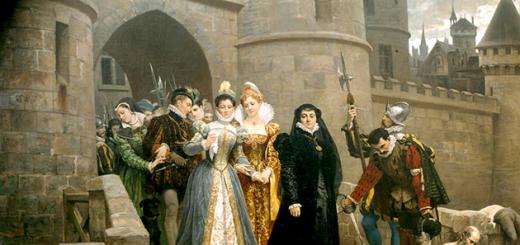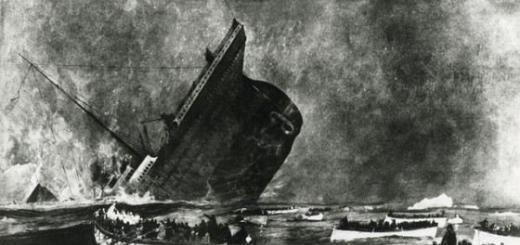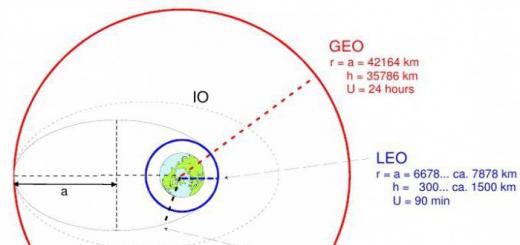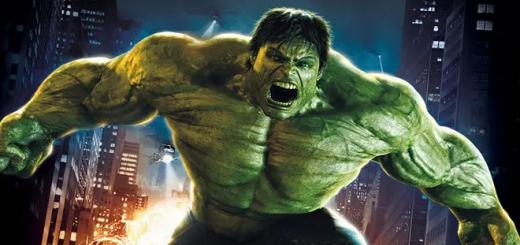Getting to know drawing techniques like Zentangle, Doodling and Zendoodling
I really liked the drawing technique, it is especially good (in my opinion) for those creative natures who want to express themselves in drawing, but do not have classical skills.
Here, in order to achieve success, you need a lot of imagination and creativity and a minimum of drawing technique, although spatial imagination is still useful to us. The pictures are unusual and exciting, they can be looked at and studied for a long time.
Unfortunately, I did not find information about these techniques in Russian, so I translated from English sources (do not judge strictly my translation).

A Zentangle is a small piece of art made with a fine-tip pen and graphite to highlight light and shadow. It is compiled in a certain order. Take a square of watercolor paper and place 4 dots in each corner with a pencil about half an inch from the border of the sheet. Connect these points with a pencil border, which can be either straight or curved (irregular). Inside the resulting frame, "lines" are drawn with a pencil, the so-called crazy lines. This divides the drawing area into sectors of various sizes and specific profiles. Take a fine fountain pen and fill the form with a variety of repeating patterns. When you've filled in the gaps, the pencil lines are erased and then shading is added to give the Zentangle its shape.
If your drawing doesn't follow these guidelines, then it's not a Zentangle. Zentangle is an abstract pattern and can be viewed from any angle. If it has a recognizable image, such as a face or eyes or an animal, it is not a Zentangle. However, it may well be a stylized Zentangle or ZIA.


Doodle (translated as doodle) is a focused drawing made while the person's attention is occupied with something else. Doodles- simple drawings, which may have specific representative values, or may simply be abstract forms.
Stereotypical drawing examples are found in the school notebook, often in the margins, done by students when they daydream or lose interest during class. Other common examples of drawing are done during long telephone conversations, with pen and paper handy.
Popular views include cartoon versions, images of teachers or schoolmates, famous television or comic characters, fictional creatures, landscapes, geometric figures and patterns, textures, banners with legends and animation scenes made in sequence on different pages of a book or notebook.



Zendoodling is a cross between Zentangle art and Doodling. Zendoodles are often free-form and have an abstract look, sometimes with splashes of color.
It's not strictly called Zentangling because it doesn't use the "string" method, nor does it require black and white.
Zendoodles are created using black ink on any type of colored background, not necessarily white paper. It is also allowed to use watercolors, pencils, chalk, markers, etc. at your discretion.



Who wants.
Drawing and ink from scratch
I will start this post with "desire", because in the matter of gaining the ability to draw with a pen / pen, personal desire is even more important than talent and thinness. skills.
Usually, drawing in any other technique begins with a pencil construction, corrections, possibly a change in composition in the process, and therefore active use. In general, no one bothers to make a pencil construction according to all the rules for drawing with a pen / pen, but this post is just about how to learn how to do without it.
First of all, those who want to learn how to draw "without an elastic band" should be patient, a little time (but every day!) And a great desire. Why do I attach such importance to desire? Because very often, especially at first, there will be disappointment in your work, and as a result, in yourself, in your skills, and only desire will not let you spit on the whole thing from a high tree and decide that even without this skill you can live in peace.
Below, I will show some tricks that will help you get a normal result, as well as give examples of mistakes and unsuccessful work that you should not be afraid of at all. I hope all this will help to maintain the desire to learn and will not allow a feeling of inferiority to appear =)
So the tools are:
Pens. You can draw with ballpoint pens, gel, some other. Now I prefer to draw, but at first it was either ink or liners.
I had to draw with reusable "Uni pin" fine line liners, but, apparently, they are either for smoother paper, or we did not agree with them in Feng Shui, but they wear out the rod faster than the refill ends. Only once we ran them, and that was when Leo wrote in a notebook with them, and did not draw. Perhaps they are not erased, and the rod goes away from being pressed into the case, but the result is the same. The most popular sizes are 0.1 and 0.2, sometimes I use 0.3, but this is when there is no 02 and very rarely 0.05 for especially small details, when I undertake to draw them at all
Very similar to the "Uni pin" liners from "Faber Castell", one of the series even in the cases is the same, only the inscription is different (now I don't have them, so the photo is from another series)
Another option is Centropen liners. They are one and a half times cheaper than "Uni pin" and two times cheaper than "Faber Castell", they are not inferior in quality, the rod still leaves, perhaps a little slower. The only difference is that they are disposable, but if you consider the fact that the rest are thrown away even before refueling, then the savings are not bad.
At the moment, Leo is done with liners - at such an expense, it turned out that it would be cheaper to buy and forget about problems with the rods.
Paper. Unlike drawings, it is most convenient for me to draw with a pen in notebooks - all the waste paper is together, it is not lost anywhere and is always at hand. For work and ink, I use, and for liners I have a cheap Chinese notebook with medium quality paper, so it’s not a pity, because the paper leaves in batches, and the drawings there are basically not the ones that you should be proud of right now.
The paper is greyish, with a density of 98gsm, which is quite enough for double-sided drawings.
When I sketch this notebook, I will switch to good ones with white beautiful paper and pleasant bindings that have been waiting for me for a long time =)
Now we pick up the tools and start drawing.
Basic rules/tips:
1. draw anything: objects on the table, furniture in the room, chandelier, interior, view from the window, flowers on the windowsill, etc. or from photographs (animals, birds, people, but do not get too carried away with photographs, the main thing is nature)
2. draw without construction as it turns out: clumsily, with errors, extra lines, compositionally incorrect, etc.
3. at first it is better to take a thinner pen so as not to blacken much
4. you need to draw lines quickly, do not tremble over every millimeter (at first there will be 1000 and 1 line, then only 1)
5. every day. Even the most deadly busy person can find 10-15, even 30 minutes of time and devote it to drawing, everything else is excuses and the absence of that same desire. What is deadly employment, Leo knows very well and firsthand (1 job, 2 hacks, study at a hospital + diploma - and Leo had this). Therefore, I ask you not to write me a PM and comments, they say, "I would love to, but there is no time", there is simply no desire and there is laziness, and there is no need and sense to notify me about this - it is not impressive, it does not cause pity and sympathy.
6. before evaluating the result of your work, you need to copy 100 pages, at least. At the time of the creation of this post (08/26/2011), I had 101 pages copied, I draw on both sides of the sheet, fortunately, the paper density allows, and there is no point in putting each such work in a frame. Many pages have 2-3 small drawings.
7. How to help yourself not to be lazy: always carry a pen with you. When you are sitting somewhere: in a cafe, park, in line, at home, with friends, etc. - take it out and put it next to you. The brain will get used to the constant potential opportunity to draw and will use this opportunity =)
How to make life easier for yourself at first:
You can draw with dots. Actually, the construction is more in the mind than on paper, but putting an end to some key place, we create a visual support for ourselves
Connecting the dots
And now you can tint and detail, but in sketches of this type, this is superfluous. Here it is important to convey the form, movement, somewhere with a careless stroke to emphasize the volume.
I have no more than 10 pieces of such finished works for the whole notebook.
Most often my ducks look like this
The main mistakes that will be exactly:
500 lines, when you want to draw one - patience, my friend, everything will be, but not immediately.
Problems with the composition, crawling out of the sheet, or a lot of space from some edge. To avoid, you can note at the very beginning extreme points object at least by eye
Disproportionality (it turned out to be a painfully beaked duck). Cures with time and practice
Wrong perspective, general clumsiness (here the perspective is lame on all four legs, with verticals it’s generally dark)
A jar of honey slumped
What to draw is necessary and useful:
Interior - wherever you live, you can always draw how it looks without even getting up from the sofa / chair / armchair / bed
All sorts of items, household appliances, utensils and so on (there was a meat grinder above - this is the most tin, especially from different angles).
Just a box
If there is, you can draw a pet from different angles when it is static (it is also necessary in dynamics, but this is more difficult and later)
It is good to draw indoor plants in such a way as to convey their volume and the appearance of the plant is clear.
Leo has a houseplant - oak, it's so obvious =)
Who doesn’t have indoor plants, don’t be lazy and buy some kind of flower, put it in a vase / glass and draw
It is also very useful to draw somewhere during a walk - we find a bench / stump, sit down and draw what first came to our eyes.
It is not necessary to draw every leaf, the most important thing is to convey the impression, volume
And you can draw if the object is piece
A good object for drawing is any stone. It is necessary to repeat the form, transfer the texture and not lose the volume (Leo still loses from time to time)
Drawing from photographs.
Also good, but in moderation and quickly. Open a photo, spend 5-7 minutes on it and move on to the next one.
So you can draw what is not found in Everyday life, all kinds of animals and birds.
Leo likes to take pictures of ducks in Vinnitsa and somewhere on the ponds, and then in the evenings draw them in detail or just sketch
The black and red Muscovy duck was so beautiful that Leo could not resist and went into details
In general, nothing complicated if you regularly devote time to practice.
If someone has problems with self-motivation and physically needs some kind of external kick in the form of: role model / ridicule, competition / mutual assistance, regularity -.
Good luck and best wishes to all who are interested! =)
A kind request to those who post my reviews and articles on their sites - I'm not against borrowing my materials, but please sign the author and put a link to the source text:
Author: Ater Leo
Taken:
On first graphic work- floodplain of the Desna River in spring, when the leaves have just begun to bloom

This is again Lutovinovka - a rural landscape, made with ink, pen and whitewash.

Corner of the forest thicket without the use of whitewash and brushes. Only pen and ink.

View from the hill to the distance.


Absolutely all artistic graphics are made from nature. Artificial tinting of the paper was not used. Some landscapes in pen and ink gel pen made on natural wrapping paper Brown, and some on the gray tone of candy boxes.
Advice for budding graphic artists.
You should not make unnecessary gestures, tinting paper or looking for some special ways to achieve artistic expressiveness. Collect pieces of unnecessary cardboard with their natural toning. Wrapping paper gives excellent results. Candy boxes will be no less useful, because cardboard is usually used for boxes. highest quality.
Tag: easel (easel drawing, print)
Still, I do design and quite often I have to make sketches on paper, although of course these sketches cannot stand on a par with well-drawn illustrations.
I started drawing with gel paint from school. Even then, these illustrations amazed me with their expressiveness, contrast, and graphic quality.
Why drawings with a helium pen, and not a regular one? Drawings with a gel pen are clear, contrasting. Drawing with a gel pen, I really enjoy my work and I recommend this activity to everyone for the soul.
(function(w, d, n, s, t) ( w[n] = w[n] || ; w[n].push(function() ( Ya.Context.AdvManager.render(( blockId: "R-A -269783-9", renderTo: "yandex_rtb_R-A-269783-9", async: true )); )); t = d.getElementsByTagName("script"); s = d.createElement("script"); s .type = "text/javascript"; s.src = "//an.yandex.ru/system/context.js"; s.async = true; t.parentNode.insertBefore(s, t); ))(this , this.document, "yandexContextAsyncCallbacks");
If you draw with a gel pen, then despite the experience, you should first make sketches with a regular pencil. It will be very disappointing to spoil the drawing if you decide to change something. The gel is rather badly erased, you will not be able to do it imperceptibly. It will be possible to correct the drawing only if you use some external dye such as white.
Of the features, it should be noted that the gel slightly tightens the pattern after drying. This should be taken into account while working.
(function(w, d, n, s, t) ( w[n] = w[n] || ; w[n].push(function() ( Ya.Context.AdvManager.render(( blockId: "R-A -269783-10", renderTo: "yandex_rtb_R-A-269783-10", async: true )); )); t = d.getElementsByTagName("script"); s = d.createElement("script"); s .type = "text/javascript"; s.src = "//an.yandex.ru/system/context.js"; s.async = true; t.parentNode.insertBefore(s, t); ))(this , this.document, "yandexContextAsyncCallbacks");
After I myself began to periodically make sketches on paper with a gel pen, it became very interesting how others do it. I collected the most interesting illustrations in this small selection of drawings with a gel pen.







(function(w, d, n, s, t) ( w[n] = w[n] || ; w[n].push(function() ( Ya.Context.AdvManager.render(( blockId: "R-A -269783-11", renderTo: "yandex_rtb_R-A-269783-11", async: true )); )); t = d.getElementsByTagName("script"); s = d.createElement("script"); s .type = "text/javascript"; s.src = "//an.yandex.ru/system/context.js"; s.async = true; t.parentNode.insertBefore(s, t); ))(this , this.document, "yandexContextAsyncCallbacks");
Of course, these are not my works, but I will try, as soon as I have free time, to complete my collection of gel drawings and post them on the blog.











